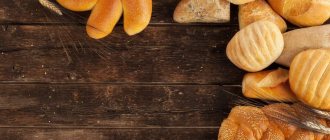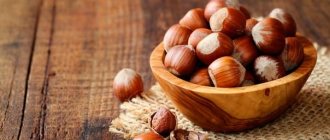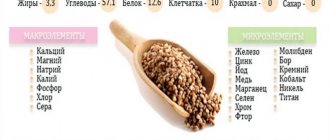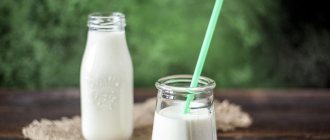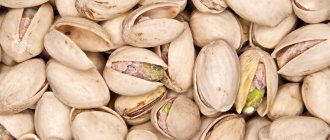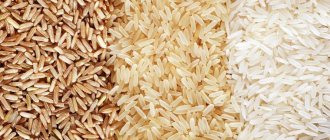The benefits and harms of flour
Complete exclusion of flour from the diet is not an advisable solution, since this product has many beneficial properties:
- has high nutritional value;
- contains a large amount of proteins, fiber, vitamins and minerals;
- improves mental activity;
- increases immunity;
- has a positive effect on the blood circulation process;
- accelerates metabolism in the body;
- prevents the development of diseases of the cardiovascular system;
- reduces the likelihood of gallstones forming;
- has a positive effect on inflammatory processes, helping to reduce them at the initial stage;
- reduces symptoms of asthma and bronchitis.
Flour is considered a high-calorie product, so its main harm is associated with rapid weight gain. This applies primarily to wheat flour, which is used in baking and bakery products. Flour can also cause allergies, since some types contain gluten (many people suffer from intolerance to this protein).
Methods for boiling eggs
Egg whites and yolks are used to prepare various types of salads and many other equally tasty and healthy dishes.
However, there are several most common cooking methods:
- Hard-boiled - place in cold water, bring to a boil, and simmer over low heat for 10 minutes.
- Soft-boiled – place in cold water, bring to a boil and cook for 3 minutes
- Soft-boiled with solid protein - place in cold water, bring to a boil and simmer for 4 minutes.
- Cooked “in a bag” - cooking time is 5 minutes after boiling water
- Boiled without shells - dissolve one teaspoon of salt and 50 mil vinegar in one liter of water, bring to a boil and carefully beat in the egg without damaging the yolk. Cook for seven minutes over low heat.
To make the finished product easier to peel, after cooking it is necessary to place it in cold water for a few minutes.
Good to know! Using eggs allows you to prepare a huge selection of different dishes, and is also an indispensable product for weight loss. However, you should know that before preparing food, you need to check the quality of the products. Spoiled chicken eggs tend to cause poisoning and other stomach diseases.
Types and varieties of flour
Flour is distributed according to several indicators:
- Type – determines the purpose of using flour. It can be bakery (rye and wheat flour from soft wheat, a mixture of different types of flour), confectionery and pasta flour (made from durum wheat).
- The type of flour is determined by the plant crop (mainly cereal plants) from which it was made. The most common flours are wheat, barley, rye, buckwheat, pea, rice and other types of flour.
- The grade is determined by the amount of flour that was obtained from 100 kg of grain raw materials. This means that the lower the grade of the product, the greater its yield.
The table below shows the existing varieties of wheat flour:
| Variety | Product Features |
| Krupchatka | Contains at least 30% gluten, has a grain size from 0.16 to 0.20 mm. Flour is white or creamy with a yellowish tint. It is added to the dough dough to give the product porosity. |
| Higher | Contains at least 28% gluten. The product is made from the core of the grain (without the outer shell). Premium flour is used to make most baked goods and is also added to sauces and creams. |
| First | Contains at least 30% gluten. It is used in the preparation of noodles, pies, savory buns, and pancakes. |
| Second | The flour turns out brown due to the fact that it contains a lot of the outer shell of wheat. |
| Whole wheat flour | The product is obtained by grinding unrefined grains. The flour particles are heterogeneous and large. Contains the highest amount of useful substances. |
Types of flour
You should not completely give up this product; you can consume it in reasonable quantities for the benefit of the body. Different types of flour have their own calorie content and nutrient composition. Several types of flour are produced only from wheat grain, differing in nutritional value:
- premium quality;
- 1 grade;
- 2 varieties;
- whole grain.
The healthiest of all types of wheat flour is whole grain flour, as it retains all the valuable properties, vitamins and minerals of wheat grains. It is recognized as dietary and is often used for weight loss because it contains a lot of protein, carbohydrates and very little fat. Premium flour is higher in calories and contains much less protein and fiber.
As for other varieties, bird cherry and spelled are considered to be the lowest in calories. Their calorie content does not exceed 150 calories per 100 grams.
Bird cherry flour is produced by grinding dried bird cherry fruits and retains all the beneficial substances contained in the berry: organic acids, antioxidants, tannins and vitamins C and P. It has very few carbohydrates and no fats. Spelled is made from a crop belonging to the wheat family, but, unlike the latter, it contains almost 3 times less carbohydrates, and the fats included in its composition are easily absorbed by the body. Both types are considered dietary and useful for weight loss and for people with diabetes.
Flaxseed flour is also considered very valuable, as it contains a lot of protein and a minimum of carbohydrates and fats.
One of the most original types of flour is rice flour. Desserts and baked goods made from it have an unusual and delicate taste, but despite its low calorie content, it contains a lot of carbohydrates and very little protein and fat. Therefore, it is useful as part of dietary dishes.
Almond flour is considered to be the highest calorie flour of all types. Its calorie content is more than 600 calories per 100 grams. It contains almost no carbohydrates, but includes proteins and a lot of fats, which are easily digestible and contain fatty acids that are beneficial to the body.
A tablespoon of almond flour contains about 60 kcal. Therefore, desserts and baked goods made from it are considered the most harmful for the figure.
Chemical composition
The chemical composition of flour depends on the grain from which it was made.
It contains the following substances:
- proteins (gluten, proteins, albumins, glutelins, plolamins);
- amino acids (glutamine, leucine, proline);
- carbohydrates - such as starch, fiber, hemicellulose, polysaccharides, as well as small amounts of fructose and glucose;
- lipids;
- fatty acids (linoleic, oleic, linolenic);
- phosphoric and silicic acids;
- vitamins E, A, PP and group B;
- minerals (phosphorus, magnesium, calcium, potassium);
- trace elements (zinc, manganese, copper, iron);
- enzymes (proteinases, amylases, lipase and others).
Each type of flour has certain features of its composition, which are presented in the table below:
| Type of flour | Features of the composition |
| Rice | Gluten-free, rich in vegetable protein, lecithin and B vitamins. Helps cleanse the body of toxins and waste. |
| Oatmeal | Rich in mucous components that normalize the functioning of the digestive tract. The product does not contain gluten. Flour contains silicon, which is responsible for metabolic processes in the body. |
| Buckwheat | Contains a lot of copper and iron, which helps maintain normal hemoglobin levels in the blood. There is no gluten in flour. |
| Corn | Contains a lot of fiber, potassium, vitamins A, B and E, improves bone and connective tissue, normalizes the flow of bile. |
| Rye | Contains a large amount of lysine. The product contains 50% more magnesium and potassium than wheat flour. |
Contents of the BZHU
BJU is the ratio of substances such as fats, carbohydrates and proteins in a product. Based on the calculation of this ratio, a diet and proper nutrition are compiled taking into account the needs of the body.
The main types of flour have the following ratio of BZHU (per 100 g):
- Wheat flour contains the most carbohydrates - 76%. In 2nd place are proteins – 10%, and in 3rd place are fats – 1%.
- Oatmeal contains 64% carbohydrates, 12.2% protein and 7.5% fat.
- Rye – 64% carbohydrates, 8.7% proteins, 1.7% fats.
- Rice contains 77.7% carbohydrates, 6.8% proteins, 0.8% fats.
- Corn – 71% carbohydrates, 8.2% protein and 1.9% fat.
- Buckwheat – 64% carbohydrates, 16.3% proteins and 3.5% fats.
- Barley flour contains 69.9% carbohydrates, 10.3% proteins, 1.1% fats.
- Soy flour contains only 24.2%, and the largest amount of proteins (of the presented types of flour) – 46.5%. Fats account for 11.2%.
- Pea flour contains 21.8% carbohydrates, 7.6% proteins, and is completely free of fat.
- Flaxseed flour contains the least amount of carbohydrates – 12.63%. The protein content is 31.94% and fat content is 12.41%.
Meat, offal, poultry
| Product | Calorie content | Squirrels | Fats | Carbohydrates |
| Mutton | 203 | 16,3 | 15,3 | 0 |
| Lamb Kidneys | 77 | 13,6 | 2,5 | 0 |
| Lamb Liver | 101 | 18,7 | 2,9 | 0 |
| Lamb Heart | 82 | 13,5 | 2,5 | 0 |
| Beef | 187 | 18,9 | 12,4 | 0 |
| Beef Brains | 124 | 9,5 | 9,5 | 0 |
| Beef liver | 98 | 17,4 | 3,1 | 0 |
| Beef Kidneys | 66 | 12,5 | 1,8 | 0 |
| Beef Udder | 173 | 12,3 | 13,7 | 0 |
| Beef Heart | 87 | 15 | 3 | 0 |
| Beef Tongue | 163 | 13,6 | 12,1 | 0 |
| Goose | 364 | 16,1 | 33,3 | 0 |
| Turkey | 197 | 21,6 | 12 | 0,8 |
| horsemeat | 143 | 20,2 | 7 | 0 |
| Rabbit | 199 | 20,7 | 12,9 | 0 |
| Chicken | 165 | 20,8 | 8,8 | 0,6 |
| Pork kidneys | 80 | 13 | 3,1 | 0 |
| Pork liver | 108 | 18,8 | 3,6 | 0 |
| Pork lean | 316 | 16,4 | 27,8 | 0 |
| Pork is fatty | 489 | 11,4 | 49,3 | 0 |
| Pork heart | 89 | 15,1 | 3,2 | 0 |
| Veal | 90 | 19,7 | 1,2 | 0 |
| Duck | 346 | 16,5 | 61,2 | 0 |
| Chickens | 156 | 18,7 | 7,8 | 0,4 |
| Pork tongue | 208 | 14,2 | 16,8 | 0 |
Calorie content per 100 g
The calorie content of different types of flour is presented in the table below:
| Type of flour | Calorie content (kcal per 100 g) |
| Wheat 2nd grade | 332 |
| Premium wheat | 350 |
| Rice | 321,1 |
| Oatmeal | 68 |
| Buckwheat | 367 |
| Corn | 370 |
| Soy | 391,7 |
| Rye | 298 |
| Barley | 325,2 |
| Linen | 287,8 |
| Pea | 118,4 |
What flour is suitable for the diet?
People who want to lose excess weight or have certain diseases or health problems follow a special diet. Based on the characteristics of the diet, the optimal type of flour is selected.
Weight loss
When losing weight, it is recommended to build a diet based on the ratio of fats, carbohydrates and proteins.
The following indicators are considered optimal:
- proteins – 40-50%;
- carbohydrates – 10-20%;
- fats – 30-40%.
Therefore, it is recommended to include dishes made from corn flour in your diet. It is rich in potassium, phosphorus, and contains a lot of fiber, which helps reduce cholesterol levels and speed up the process of losing excess weight. Corn flour also improves the microflora of the intestines and stomach, and has a positive effect on the condition of blood vessels.
The calorie content of different types of flour varies significantly
Rice flour has also proven itself well in dietary nutrition. It removes salts from the body and normalizes the digestion process due to the content of potassium, calcium and folic acid. It is also useful to consume buckwheat flour when losing weight. The slow sugars it contains satiate the body, satisfying the feeling of hunger for a long time.
Additionally, the product helps remove cholesterol from the body due to its selenium content. Oatmeal regulates fat metabolism in the body, cleanses it of toxins due to its fiber content. Also, when consuming the product, the body produces the substance serotonin, which is responsible for a person’s good mood.
On the diet, you are allowed to eat products made from several types of flour. For example, Borodino bread, which contains rye and wheat flour, helps fight excess weight, prevent the development of cancer and iron deficiency anemia.
Diabetes
The calorie content of different types of flour must be taken into account when creating a diet for people with diabetes. It is also necessary to take into account the glycemic index (the rate of breakdown of glucose that enters the blood after consuming the product) of flour. The optimal figure is up to 50 units.
Among the main types of flour, flaxseed flour has the lowest indicator - 35 units. Its use allows you to reduce the glycemic index (GI) of various dishes due to the low carbohydrate content.
The use of oatmeal is also allowed - its GI is 45 units. It has the ability to reduce blood glucose levels, improve liver function, and normalize the functioning of the cardiovascular system.
If you have diabetes, you can also use rye flour. Its GI is 45 units. It is rich in magnesium, which is involved in the activation of many enzymes in the body, including the enzyme responsible for the production of insulin.
Daily volume of flour consumption on a diet
A person who does not have health problems, but wants to lose a few extra pounds, should consume up to 150 g of flour products per day. At the same time, a single serving containing flour products should not exceed 50 g.
Here are some tips to help you lose weight:
- Flour products are best consumed in the first half of the day.
- It is recommended to combine flour dishes with vegetables and dairy products.
- It is undesirable to simultaneously eat flour products along with cereals, fatty dairy products, and vegetables containing a lot of starch.
- The combined consumption of flour with sweet dishes, pickled and salted vegetables, as well as protein products is prohibited.
- Do not give up eating flour products - the substances they contain cannot be replaced with other food products.
Terms and conditions of flour storage
To get the maximum benefit from flour, it is necessary to store this product correctly.
Some recommendations will help with this:
- Favorable temperatures range from + 5 to + 18 0C.
- The ideal humidity level is no more than 60-70%. Its high level indoors can cause the development of fungus in the product.
- The formation of condensation should be avoided - it will cause the flour to become damp and mold may appear in it.
- The flour should not be exposed to direct sunlight - it is better to choose a shaded place (for example, a closed cabinet).
- The storage room should be dry and clean, free of foreign odors, since the wheat product tends to quickly absorb them.
- Do not allow changes in temperature and humidity, as the flour may deteriorate.
- The room where flour is stored must be periodically ventilated and cleaned to avoid the appearance of pests.
- After opening the bag, it is best to pour the flour into a glass or metal jar or box that closes tightly. You can also choose fabric or paper bags for storage.
- Storing flour in the refrigerator extends its shelf life.
- It is recommended to periodically inspect the flour - if insects are found, the flour should be sifted and left for listening.
- One of the ways to prevent insects and pests is to place 1-2 unpeeled cloves of garlic in flour.
- If you take flour in your hand and feel cold, this indicates increased moisture in the product. Therefore, it is recommended to dry the flour.
Its shelf life depends on the type of flour, which is presented in the table below:
| Type of flour | Shelf life (in months) |
| Wheat flour (highest grade) | 12 |
| Whole grain wheat | 6-8 |
| Rye | 4-6 |
| Corn (low-fat) | 3-6 |
| Soy (deodorized) | 12 |
| Buckwheat | 7 |
| Barley, rice | 6 |
| Pea | 8-10 |
When pouring flour from the original packaging, it is necessary to put a sticker on the container where it will be stored indicating the expiration date (indicated by the manufacturer on the packaging). After the end of the storage period, it is not recommended to use the product, as it loses its nutritional and quality properties.
Flour contains a large number of useful substances. This is a high-calorie product, but with the right choice of flour, you can create an optimal diet containing healthy flour products.
How to choose and store eggs correctly?
In order to choose the right quality product, you should pay attention to some factors, such as:
- Shell integrity
- The shell must be clean without traces of dirt
- The shell must have a uniform surface without deformation
Good to know! According to all standards, when purchasing products at retail outlets, there must be a special marking that indicates to the buyer the shelf life and what category the product belongs to.
The degree of freshness of the product is of great importance; this indicator can be determined in several ways:
- The shell of a fresh product should not be glossy; a fresh egg has a matte surface.
- There should be no sounds during shaking.
- A product that is not fresh tends to float in salt water.
- When split, the protein should not contain additional impurities and be absolutely transparent in color.
- When cleaning a cooked product, removing the shell from a fresh product will be problematic.
Egg whites and yolks are components of many common dishes, so almost every home has a decent supply of this kind of product. Also, this product differs from many other types of food in its long shelf life.
Note! This product can be stored for up to three weeks in the refrigerator and two weeks at room temperature. The prepared product can be stored in the refrigerator for up to two weeks, while all the beneficial substances will be preserved in full.
For proper storage, some rules should be taken into account:
- Storage should be done in the refrigerator in a specially designated place, where the temperature is several degrees higher.
- The product must be placed with the pointed parts facing down.
- It is unacceptable to wash the surface of the shell, this will reduce the shelf life
- Great attention should be paid to the expiration date, which is indicated on special labeling.
If the shell is cracked, be sure to wipe the remaining eggs with a clean cloth to avoid the appearance of an unpleasant odor.

